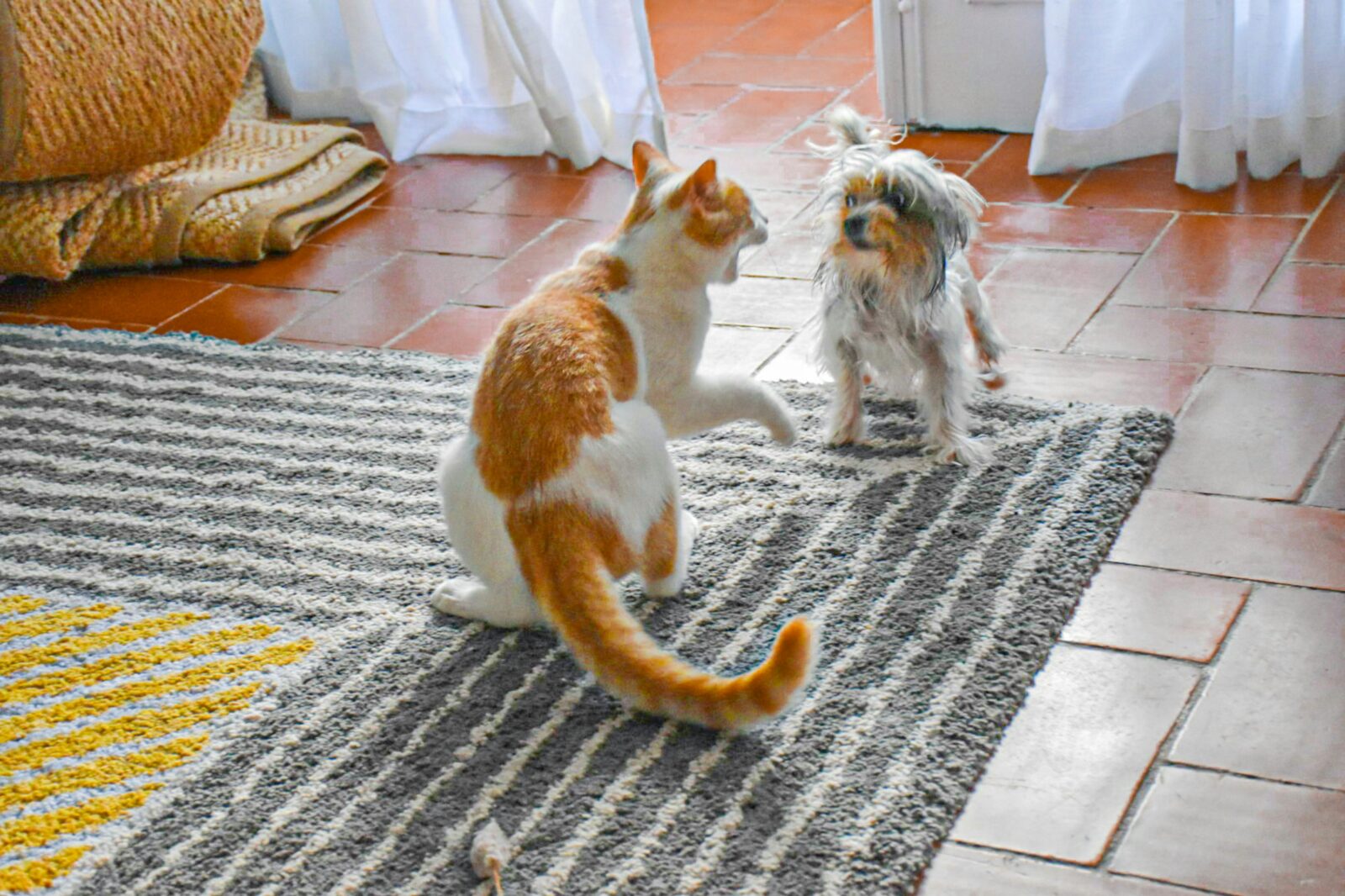Crate training is a valuable tool for pet owners, providing a safe and comfortable space for dogs and cats. It can aid in house training, offer a secure spot for pets during travel, and help with behavioral issues. However, crate training requires patience, consistency, and the right techniques to be effective. Here are eight essential secrets to successful crate training for your dog or cat.
1. Choose the Right Crate
The first step to successful crate training is selecting a crate that suits your pet’s needs.
1.1 Size Matters
- Appropriate Size: The crate should be just large enough for your pet to stand up, turn around, and lie down comfortably. For dogs, it’s essential to avoid crating them in a space that’s too big, as it can encourage them to use one end as a bathroom. For cats, a slightly larger crate can offer extra comfort.
- Adjustable Crates: For puppies or kittens, consider a crate with adjustable dividers. This allows you to adjust the space as they grow, maintaining the correct size for effective training.
1.2 Comfort and Safety
- Comfortable Bedding: Line the crate with comfortable bedding, such as a soft blanket or a crate mat, to make it inviting. Ensure the bedding is washable for easy cleaning.
- Safety Features: Check that the crate has secure doors and ventilation to ensure safety and comfort during use.
2. Introduce the Crate Gradually
A gradual introduction helps your pet associate the crate with positive experiences.
2.1 Initial Familiarization
- Positive Exposure: Place the crate in a common area where your pet spends time. Leave the door open and allow them to explore it at their own pace. Avoid forcing them inside.
- Treats and Toys: Place treats, toys, or their favorite blanket inside the crate to encourage exploration. This helps create positive associations with the crate.
2.2 Short Sessions
- Gradual Time Increase: Start by encouraging your pet to enter the crate for short periods. Gradually increase the duration as they become more comfortable. For example, start with a few minutes and slowly extend the time as they adjust.
- Feeding Inside the Crate: Consider feeding your pet their meals inside the crate to create a positive association with it. This can help them view the crate as a pleasant and secure space.
3. Use Positive Reinforcement
Positive reinforcement is crucial for crate training success.
3.1 Reward for Good Behavior
- Immediate Rewards: Immediately reward your pet with treats, praise, or playtime when they enter the crate or remain inside calmly. This reinforces the behavior and encourages them to continue using the crate.
- Consistency: Be consistent with rewards and praise. Ensure that your pet receives positive reinforcement every time they exhibit the desired behavior.
3.2 Avoid Negative Associations
- No Punishment: Never use the crate as a punishment or force your pet inside. This can create negative associations and make crate training more challenging.
- Calm Demeanor: Maintain a calm and positive demeanor during training sessions. Your attitude will influence how your pet perceives the crate.
4. Establish a Routine
Routine helps pets understand what to expect and when.
4.1 Regular Crate Time
- Scheduled Breaks: Incorporate regular crate time into your pet’s daily routine. For example, crate your dog for short periods while you are home to get them used to being in the crate without feeling isolated.
- Bedtime Routine: Make the crate part of your pet’s bedtime routine. This helps them associate the crate with rest and relaxation.
4.2 Predictable Patterns
- Consistent Commands: Use consistent verbal cues or commands when introducing your pet to the crate, such as “crate time” or “go to your crate.” This helps your pet associate the command with the action.
- Gradual Adjustments: Adjust the routine gradually to accommodate your pet’s comfort level. Avoid sudden changes that could cause stress or confusion.
5. Gradual Alone Time
Teaching your pet to be comfortable alone in the crate is an important step.
5.1 Short Separations
- Start Small: Begin by leaving your pet in the crate for short periods while you are home. Gradually increase the duration as they become more comfortable being alone.
- Positive Reinforcement: Reward your pet for staying calm during short separations. This helps them learn that being alone in the crate is a positive experience.
5.2 Separation Anxiety
- Address Anxiety: If your pet shows signs of separation anxiety, such as excessive barking or whining, work on gradually increasing crate time and provide comfort items, like a favorite toy or blanket.
- Professional Help: If separation anxiety persists, consider consulting a veterinarian or a professional animal behaviorist for additional support and strategies.
6. Proper Crate Use During Travel
Crates are invaluable for travel, but proper use is essential for safety and comfort.
6.1 Travel Crates
- Secure and Ventilated: Ensure the travel crate is secure and well-ventilated. It should be large enough for your pet to stand, turn, and lie down comfortably.
- Familiar Items: Place familiar items, such as your pet’s bedding or a favorite toy, inside the travel crate to provide comfort and reduce stress during travel.
6.2 Training for Travel
- Gradual Exposure: Familiarize your pet with the travel crate by taking them on short trips before longer journeys. This helps them get used to the crate and reduces travel anxiety.
- Comfort and Safety: Ensure the crate is securely fastened in your vehicle and provide water and breaks during long trips to keep your pet comfortable.
7. Addressing Common Issues
Common issues can arise during crate training, but they can be addressed with the right approach.
7.1 Whining and Barking
- Ignore Unwanted Behavior: If your pet whines or barks while in the crate, avoid giving them attention, as this can reinforce the behavior. Instead, wait for them to calm down before letting them out.
- Exercise and Engagement: Ensure your pet receives plenty of exercise and mental stimulation before crate time. A tired pet is less likely to vocalize or exhibit restless behavior.
7.2 Accidents in the Crate
- Proper House Training: Ensure your pet is fully house trained before using the crate for extended periods. Accidents in the crate can be a sign of incomplete house training or an overly long crate session.
- Clean Thoroughly: If accidents occur, clean the crate thoroughly with an enzyme cleaner to remove odors and prevent your pet from developing a habit of soiling the crate.
8. Maintaining and Reinforcing Crate Training
Ongoing reinforcement helps maintain positive crate associations.
8.1 Regular Use
- Daily Crate Time: Continue to use the crate regularly to reinforce its positive associations. Incorporate crate time into your pet’s daily routine to maintain their comfort and familiarity with it.
- Positive Experiences: Ensure that crate time remains a positive experience. Avoid using the crate for punishment or extended periods of confinement.
8.2 Monitor Progress
- Assess Comfort Levels: Regularly assess your pet’s comfort level and adjust crate use as needed. If you notice any signs of discomfort or anxiety, address them promptly to ensure continued success with crate training.
- Adapt as Needed: Be flexible and adapt your training methods based on your pet’s progress and individual needs. Each pet is unique, and adjustments may be necessary to achieve the best results.
Conclusion
Crate training is a valuable skill for both dogs and cats, providing them with a safe and secure space that can enhance their overall well-being. By following these eight essential secrets, you can ensure a smooth and successful crate training process. From choosing the right crate and introducing it gradually to using positive reinforcement and addressing common issues, each step plays a crucial role in creating a positive crate experience for your furry friend.
Remember to be patient, consistent, and attentive to your pet’s needs throughout the training process. With dedication and the right approach, crate training can become a beneficial and enjoyable experience for both you and your pet.











Leave a Reply